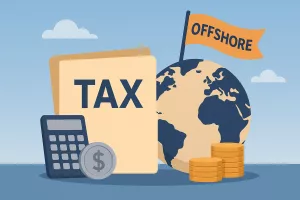Navigating the world of stock trading can initially seem complex, with various types of orders available to investors. Understanding the differences, benefits, and risks associated with these orders is crucial. Let’s delve deeper into stop orders and limit orders, exploring their mechanics, when to use them, and common strategies.
Understanding Stop Orders
A stop order is like setting an automatic trigger. Imagine you’re watching a stock closely, and you have a clear idea of the maximum loss you’re willing to tolerate. Setting a stop order allows you to limit your losses by pre-determining a price at which your stock will be sold if the market moves against you. Once the stop price is reached, your order transforms into a market order, executing at the current market price.
Practical Example of a Stop Order
Suppose you’ve purchased shares of Company XYZ at $50 each, and you want to limit your potential loss to 10%. You could place a stop order at $45. If the stock price drops to $45, the stop order becomes a market order, and your shares will be sold at the next available market price. This strategy offers some peace of mind in volatile markets.
Varieties of Stop Orders
- Stop-Loss Order: Primarily used to prevent losses. The trigger price is set below the current market price for a sell stop order.
- Stop-Buy Order: Used to purchase a stock only after it reaches a certain price, often higher than its current price. This can be useful for short sellers who want to limit losses if a stock’s price rises.
Decoding Limit Orders
Limit orders give investors control over the price at which their trades are executed. By specifying the maximum price you’re willing to pay when buying or the minimum price you’re willing to accept when selling, you ensure that you’re not caught by surprise by sudden market movements.
Practical Example of a Limit Order
Let’s say you want to buy shares of Company ABC, currently trading at $100, but you’re only willing to pay $95 per share. Placing a limit order at $95 ensures you will only purchase the shares if the price drops to $95 or below. If the price never drops, the trade won’t occur, which can be both an advantage and a drawback.
Types of Limit Orders
- Buy Limit Order: Placed below the current market price. It’s filled at the limit price or lower.
- Sell Limit Order: Placed above the current market price, filled at the limit price or higher.
Key Differences Expanded
The primary difference between stop and limit orders lies in execution. A stop order becomes a market order once the stop price is hit, meaning it doesn’t guarantee the execution price. In contrast, a limit order will only execute at the specified price or better, ensuring price control but not execution.
Execution Timing
- Stop Orders: Triggered immediately once the market hits the stop price, but executed at the next available price. This is useful in fast-moving markets where quick execution is critical.
- Limit Orders: Only executed at the specified price or better, providing control but possibly missing out if the market never reaches the limit price.
Benefits and Risks in Detail
Advantages of Stop Orders
- Protection Against Losses: Automatically sells the asset at the set stop price, preventing further loss.
- No Need for Constant Monitoring: Ideal for those who can’t watch the market continuously.
- Flexibility: Can be used in both rising and falling markets to protect gains or limit losses.
Risks of Stop Orders
- Price Gaps: In highly volatile markets, the execution price might differ significantly from the stop price.
- Market Swings: Temporary price swings might trigger a stop order unintentionally, leading to unnecessary sales.
Advantages of Limit Orders
- Price Certainty: Ensures trades are only executed at the desired price or better.
- Strategic Entry or Exit: Allows investors to capitalize on expected price movements.
- Controlled Execution: Particularly beneficial in less volatile or stable markets.
Risks of Limit Orders
- Missed Opportunities: If the market doesn’t reach the limit price, the trade won’t execute.
- Partial Fills: In some cases, only part of your order may be filled if there aren’t enough shares available at your limit price.
When to Use Each Order Type
Strategic Uses of Stop Orders
- Safeguarding Investments: For investors who want to protect profits or stop losses.
- Volatile Markets: When market conditions are unpredictable, and quick responses are needed.
- Psychological Comfort: Provides peace of mind, reducing stress from market fluctuations.
Strategic Uses of Limit Orders
- Targeted Buying/Selling: When you have a specific entry or exit point in mind.
- Avoid Overpaying or Underselling: Ensures you don’t pay more than you’re willing to or sell for less than desired.
- Long-Term Strategies: Useful for investors with a longer horizon who can wait for their price.
Common Mistakes and How to Avoid Them
Mistakes with Stop Orders
- Setting Stops Too Tight: A tight stop might cause an order to trigger on small fluctuations.
- Solution: Allow for some market noise by setting stops with a reasonable buffer.
- Ignoring Market Conditions: Not all stocks behave the same; volatility varies.
- Solution: Adjust stop levels based on the stock’s historical volatility.
Mistakes with Limit Orders
- Unrealistic Limit Prices: Setting a limit too far from the current price may result in no execution.
- Solution: Research past price trends and set realistic limit levels.
- Failing to Adjust Orders: Market conditions change, and so should your orders.
- Solution: Regularly review and adjust limit orders based on current market conditions.
Real-World Case Studies
Case Study: Stop Order in Action
In 2020, during the COVID-19 pandemic, many stocks experienced rapid price declines. An investor holding airline stocks might have set a stop order to sell if prices fell by 15%. As travel bans came into effect, the stop order would have triggered, selling shares before more significant losses occurred.
Case Study: Limit Order Success
Consider an investor interested in buying a tech stock that was trending upwards. By placing a buy limit order $5 below the current price, they capitalized on a price dip when a quarterly earnings report led to a temporary sell-off, allowing them to purchase shares at a discount.
Additional Considerations
Combining Stop and Limit Orders
Advanced strategies can involve using both order types to maximize control and flexibility. For instance, a trader might use a stop-loss order to protect against severe losses while setting a limit order to secure a precise entry point on a different trade, balancing risk and opportunity.
Role of Market Conditions
The effectiveness of stop and limit orders can be heavily influenced by market conditions. In highly liquid markets, these orders tend to execute closer to the desired prices. In contrast, during low liquidity or high volatility, the execution can vary widely.
Technology and Tools
Many trading platforms offer sophisticated tools to help manage stop and limit orders effectively. Features like trailing stops, which adjust automatically as the price moves in your favor, can enhance the flexibility of stop orders.
Final Thoughts
Mastering stop and limit orders is integral to any investor’s toolkit. By understanding their mechanics, benefits, and risks, you can make more informed decisions and build a strategy that aligns with your investment goals. Remember, the key is not just knowing when to use these orders but also adapting to the ever-changing dynamics of the market. With careful planning and strategic execution, these tools can significantly enhance your trading success.



